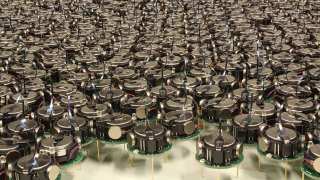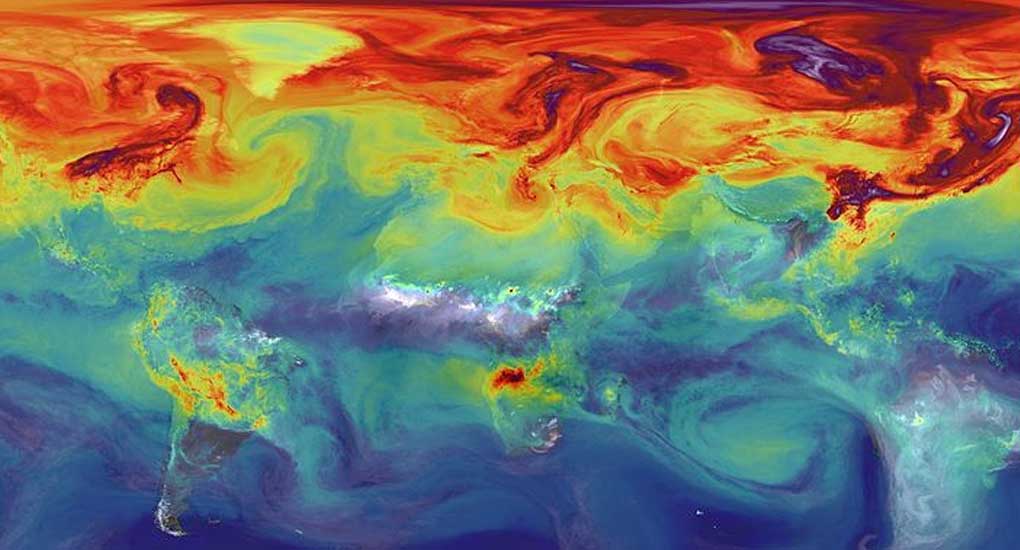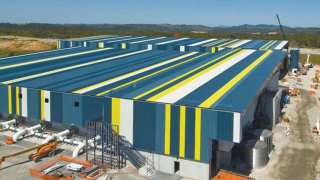When it comes to global warming, we all know who is the biggest culprit: carbon dioxide. This simple molecule produced from the combustion of gasoline and other fuels gets most of the attention in the media because the amount of it is increasing in the atmosphere and its interaction with sunlight “traps” heat near the planet’s surface, causing its average temperature to rise. All that is well known and solid science—however, carbon dioxide isn’t the only molecule we should be worried about. Another important energy-related gas, methane, is less well known but nearly as important. Although there’s less of it in the air, a single molecule of methane can trap the same amount of heat as 30 carbon dioxide molecules.
There’s still quite a lot we don’t know about how and where methane is produced. A newly developed methane camera described in the journal Nature Climate Change might change that. Scientists at Linköping University and Stockholm University in Sweden designed their camera specifically for measuring methane in the air each time it takes a photograph. What’s more, the camera can take thousands of measurements per second. Because of its ability to “see” changes in the amount of methane over a distance of less than a meter within a very small time interval, the camera can detect where methane is coming from and how much of it is being emitted whenever and wherever the photograph is taken.
How is it possible to see a colorless, invisible gas like methane in the air? Like carbon dioxide and other global warming perpetrators, methane can absorb the energy from incoming sunlight at certain wavelengths. These wavelengths are unique to the methane molecule, so if you measure the intensity of light passing through air that contains methane and then separate the light into its component wavelengths, you will see a “fingerprint” of the methane molecule which is proportional to the amount of methane that absorbed the light.
This all means that the methane camera can directly see the place, time, and exact amount of methane going into the atmosphere from the Earth’s surface. Such comprehensive information will enable climate change researchers to answer a lot of questions about where methane is coming from and why the amount of it in the atmosphere has been rising rapidly. Although scientists have long known about the global warming potential of methane, the only information available came from satellites in space and from individual measurements at specific methane sources on Earth’s surface. The satellite observations give us a good understanding of the distribution of methane worldwide, but it is not clear how this global picture matches up with the much smaller-scale surface measurements. This new camera can detect methane from a distance of up to about two thousand feet, and can track in real time how a plume of methane gas forms and emanates from sources at a livestock farm, a sewage deposit, or even forests and lakes. It can measure methane emissions on an intermediate scale that can help connect the other available measurements to give a complete picture of this key climate change offender in our atmosphere.
As a demonstration of their camera’s impressive capabilities, the researchers, led by assistant professor Magnus Gålfalk of Tema Environmental Change at Linköping University, recorded a video of a cloud of methane issuing from the ventilation outlet of a cow barn. At first the team was expecting the majority of methane signals to come from a manure pile outside the barn, but after taking a photo with their camera they were surprised to find that the stream of gas from the barn vent contained a much larger amount of methane.
What’s next for the applications of this global warming super camera? The Swedish team intends to include the new technology in a helicopter, which will fly over forested regions and bodies of water to photograph methane sources in a large area within a short time frame. The data provided by such a campaign will be much clearer, complete, and more accurate than typical measurement methods currently used in research aircraft. As the picture for methane comes into focus, perhaps we will find that its role in global warming deserves much more media attention. Give carbon dioxide a break!
Top image: NASA Holds Media Briefing on Carbon's Role in Earth's Future Climate. (Public Domain)
References
Therese Ekstrand Amaya. “Advanced new camera can measure greenhouse gases.” Linköping University Research, 1 Dec 2015, http://liu.se/forskning/forskningsnyheter/1.661765/1.661775?l=en (accessed 12 Dec 2016).
Magnus Gålfalk, Göran Olofsson, Patrick Crill, David Bastviken. “Making methane visible.” Nature Climate Change 6, 426-430 (2016), doi:10.1038/nclimate2877.
Simon Hadlington. “New camera makes methane visible.” Chemistry World, 14 Dec 2015, https://www.chemistryworld.com/news/new-camera-makes-methane-visible/9250.article (accessed 12 Dec 2016).
“Understanding Global Warming Potentials.” US Environmental Protection Agency, https://www.epa.gov/ghgemissions/understanding-global-warming-potentials (accessed 12 Dec 2016).







No comment